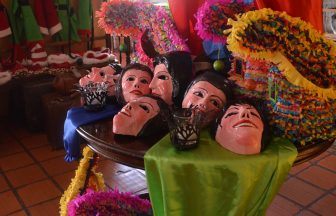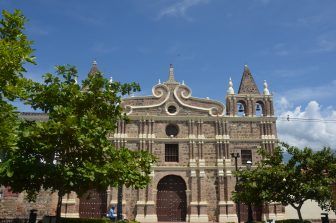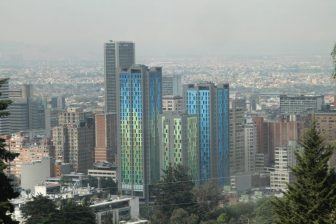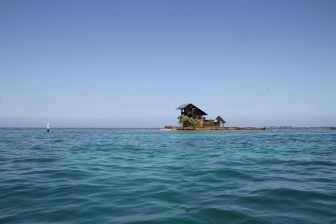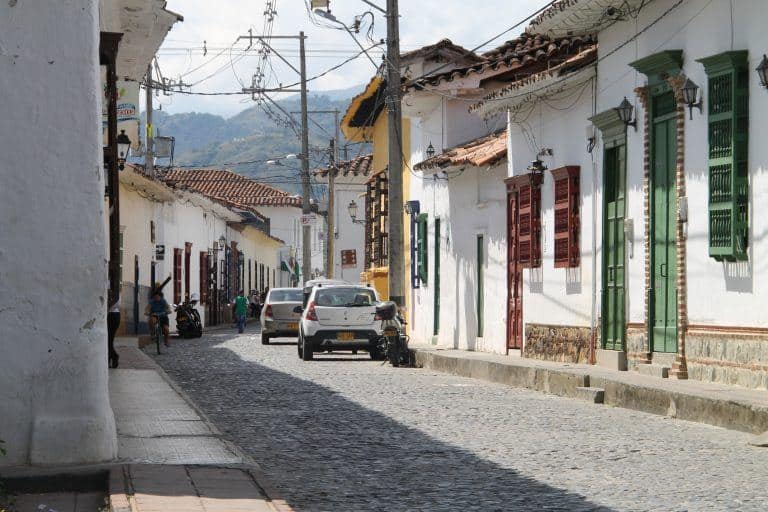
[ Dec.2016 ] After staying in Barichara in Colombia for two nights, we flew to Medellin.
The flight from Bucaramanga was only 35 minutes long.
We arrived at night and checked in the hotel and that was it for that day.
Next morning at 9 am, our guide, Maria came and picked us up and we went to Santa Fe de Antioquia which was about 80 km north west of Medellin.
During our journey, Maria talked about Medellin.
It is the second largest city in Colombia and it was the most dangerous city in the world until about 20 years ago.
“That’s only because of Pablo. Before him, it was a lovely peaceful city” she said.
The person she called Pablo as if he was her friend is Pablo Escobar, the drug lord and the boss of ‘Medellin Cartel’.
Medellin was the battle field during 1980s and 90s because of the conflicts between them and the government or rival criminal organizations.
After he was killed in 1993, peace has been returning to the city slowly.
There were many huts made of bricks in the suburbs of the city and poor people live there, but “they came running away from the Panama border area and it is not necessarily dangerous there” Maria said.
Because bricks are cheap, they make their homes using them and the area of those houses look pink from a distance, so Medellin is sometimes called ‘Pink City’.
Listening to her, we arrived in Santa Fe de Antioquia whose altitude was about 500 metres.
Medellin was about 1500 metres, so we came down quite a lot and the temperature went up.
In this country, the temperature changes depending on the altitude rather than the position.
Santa Fe de Antioquia was similar to Barichara, but not so tidy.
The white houses and cobbled streets were the same, but here there was more disorderly atmosphere which was inevitable for a town with a larger population.
Maria gave us a lot of information, including about the festival which was held at the end of every year.
It used to be the day when black slaves wore masks of white faces and walked around free like white people.
Now it is a festival for everyone.
Until then we did not hear anything about slaves, but here there were some stories.
For example, the street in front of the historical museum of this town used to be called ‘street of sadness’.
The Spanish checked the health of slaves looking at their white of the eyes and if some of them were ill, they were taken to the square in front of Santa Barbara Church through this street and killed.
At first, the Spanish tried to make the native people slaves, but they resisted and chose to kill themselves rather than becoming slaves, so slaves from Africa were imported.
And the native people and the slaves were totally separated by the Spanish.
There was another sad story regarding the natives and the Spanish.
The Spanish were greedy for gold and pressed the natives demanding “Where were the precious yellow things?” and many of the natives were killed because they refused to tell them.
But afterwards, they found out that ‘the precious yellow things’ for the native people was corn and not gold.

